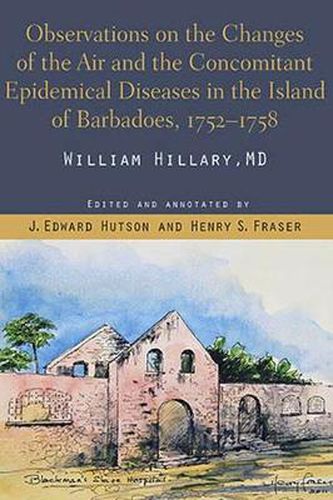Readings Newsletter
Become a Readings Member to make your shopping experience even easier.
Sign in or sign up for free!
You’re not far away from qualifying for FREE standard shipping within Australia
You’ve qualified for FREE standard shipping within Australia
The cart is loading…






Observations on the Changes of the Air and the Concomitant Epidemical Diseases in the Island of Barbadoes was first published in 1759 in London. Remarkably, a third edition was published in Philadelphia in 1812, with praise and annotations by the most famous American physician, Dr. Benjamin Rush, and with good reason.
It is certainly the first comprehensive documentation of an epidemiological nature, in English, in the Caribbean, and justifies the title “first Caribbean epidemiologist’ for Dr Hillary. He made rigourous observations and clear deductions that have stood the test of time surprisingly well. As Sir George Alleyne, director emeritus of PAHO, says: We marvel at the conclusions he drew from his observations without the use of the technology which we have at our disposal. We are surprised by the accuracy of the symptomatology he describes.
Indeed, Hillary is famous for the earliest description of tropical sprue, but his description of what seemed to be yellow fever but was not contagious , as yellow fever was then thought to be, was absolutely accurate and this Barbados jaundice turned out to be leptospirosis. His methods, his clinical skills and his eloquent writing deserve to be widely read.
$9.00 standard shipping within Australia
FREE standard shipping within Australia for orders over $100.00
Express & International shipping calculated at checkout
Observations on the Changes of the Air and the Concomitant Epidemical Diseases in the Island of Barbadoes was first published in 1759 in London. Remarkably, a third edition was published in Philadelphia in 1812, with praise and annotations by the most famous American physician, Dr. Benjamin Rush, and with good reason.
It is certainly the first comprehensive documentation of an epidemiological nature, in English, in the Caribbean, and justifies the title “first Caribbean epidemiologist’ for Dr Hillary. He made rigourous observations and clear deductions that have stood the test of time surprisingly well. As Sir George Alleyne, director emeritus of PAHO, says: We marvel at the conclusions he drew from his observations without the use of the technology which we have at our disposal. We are surprised by the accuracy of the symptomatology he describes.
Indeed, Hillary is famous for the earliest description of tropical sprue, but his description of what seemed to be yellow fever but was not contagious , as yellow fever was then thought to be, was absolutely accurate and this Barbados jaundice turned out to be leptospirosis. His methods, his clinical skills and his eloquent writing deserve to be widely read.